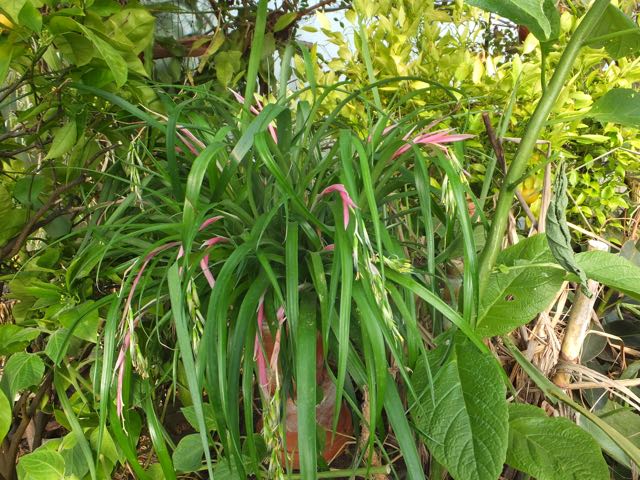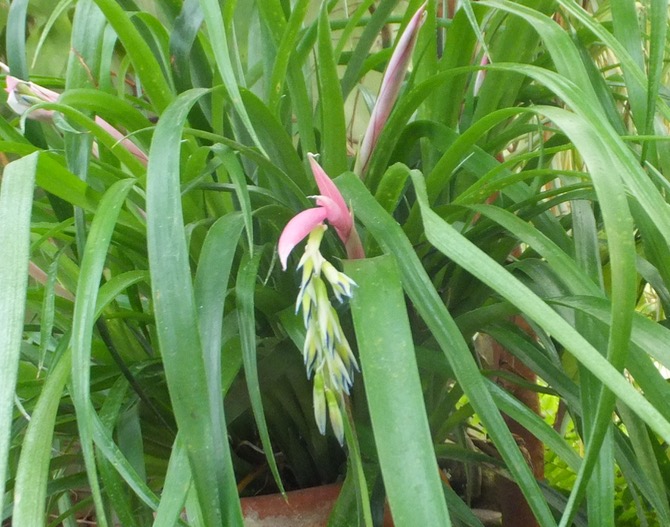
The Friendship Plant is a very tough house plant, and an even better choice for the glasshouse. Attractive clumps of foliage erupt nodding spike after spike of pink bracts, each cascading green petals with a bright blue edge and golden anthers. These continue to appear over a long period. It will withstand neglect, and resists dry air indoors better than most plants. What more need I add?
Introduced from South America during the early 1800s Billbergia nutans, the Friendship Plant (Queen’s Tears in the USA) is a survivor from the huge Victorian interest in the genus for they cultivated dozens of similar species in their hothouses as many give stupendous displays of multi-coloured flowers and or ornamental foliage.
Related to the pineapples these are Bromeliads with tough leaves designed to funnel water back to the roots. These evolved as epiphytes and are found in holes in trees filled with decaying wood and leaf-mould. This situation with huge swings of water-logging then drought, and with dense shade, has adapted these plants rather well for cultivation here. Indeed their only slight drawback is these are tender with B. nutans being less vulnerable though even this cannot stand actual frost. Indeed in this it’s similar to Citrus and can likewise enjoy summers outdoors. This can be very beneficial especially for large old mature clumps as the rain and wind clear any accumulated dust off the foliage.

Although theoretically possible to start with seed if you could get it this plant is best propagated by dividing larger clumps. A humus rich compost of leaf mould and sand suits best but this is an obliging plant and will survive anyway. Watering and feeding are likewise best done lightly and regularly but as I said at the beginning this survives neglect almost as well as a cactus. It also seems immune to all pests and diseases though apparently it may sometimes suffer from scale insects.
B. nutans is widely available but other species are harder to find commercially. Billbergia windii is somewhat similar with larger bracts. In B. fasciata the flowers are bright red emerging from tongue shaped leaves formed into foot long tubes, in B. vittata this tubular form can reach a yard or more. Those with a warm glass house can search for another thirty or so tenderer, rare and very choice species.


